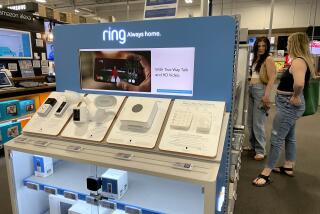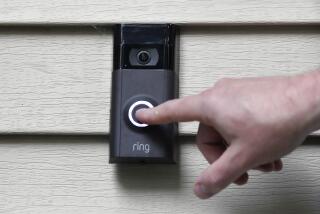A Couch Potato’s Heaven Just in Time for Christmas
- Share via
Forget the Grinch. It’s now the chip that wants to steal Christmas.
In just the past few economically depressed months, a new crop of home-bound products has dared to enter the marketplace, challenging how we spend our entertainment and cultural dollars, offering products that have the potential of turning living rooms into theaters and homes into virtual entertainment multiplexes.
If you believe the claims, we now have television sets that are “smart,” video monitors that show “imagination,” and computers that sing, dance and are so user friendly that they practically do our breathing, if not our thinking.
The microchip and its show-business cousin, the compact disc, have become our New Entertainers. Software is the star, hardware the hero.
The compact disc changed the way we listen to music. Now, new CDs capable of offering pictures, sounds and images on television monitors and computer screens may do the same, but this time they will change how we get the picture--our movies and our television shows.
Here’s a sampling of the recently uncrated New Entertainers:
Frox Inc., of California’s Silicon Valley, has perhaps the most ambitious of the new microchip multiple marvels. It’s called the Frox-System with its FroxControl and FroxWand (really), an upscale home-theater system that starts at $10,000 and keeps going up to $40,000. The system is designed to transmogrify whole rooms into home theaters, putting into one hand-held device the controls for almost every electronic thing--the television monitor, the CD player with its library of 100 CDs, the VCR, the laser-disc player, the LP turntable, the speakers, the satellite dish, almost anything that produces sound and picture inside your home. The TV picture is near-high-definition quality with most scan lines and blurred motions eliminated after the television signal has been digitized.
FroxSound is played through fiber-optic cable rather than copper wires.
FroxCast allows viewers to receive whole inventories of information on the television screen: program data, libraries, information services, VCR programming.
Frox is the latest example of the direction home entertainment is taking--the development of whole systems based around large, high-quality television monitors tied to their video and laser cousins to produce home-theater systems that not only surround, they also sweep you up. Many specialty and chain electronics stores have already taken floor space to create their own sample home-theater rooms, complete with couch, lounges, coffee tables, remote controls and walls of video and audio devices.
While Frox modestly calls itself smart television, the multinational Philips company calls its new CD-I (Compact Disc-Interactive) system “the imagination machine, a new way of looking at television.” So far, Philips, which recently introduced its new products, is the most visible of the many companies that hope to persuade us that audio and visual compact discs are the means to a fuller and richer life in front of the television set.
For less than $1,000, Philips will put its new CD player on top of your TV set and a Thumbstick in your hand (further proof of high-tech language abuse). The CD-I discs provide pictures, text and sound. The I in CD-I stands for interactive, which means that the Thumbstick lets you browse in any direction through an entire encyclopedia set that’s shown on the screen: take a golf lesson, visit a museum, study a painting, learn photography, play games or gamble as if your front room were a Strip casino. And next summer, Kodak plans to introduce its digital method of taking pictures, and the CD-I player will become a photography studio, editing room, portrait studio and photo gallery.
Compact discs with visuals are also at the heart of entertainment developments for home computer users. Commodore, IBM and Microsoft earlier this year came out with products that use a CD-ROM device--a virtual compact-disc player for qualified computers. It’s in the $300 to $500 range and provides a range of audio and visual pursuits: a Beethoven symphony that’s multimedia (you can stop it at any time, look at the score, get the history of the music, read what the critics have said) along with entire library shelves of books and museum collections of art works.
The literal retail explosion of these New Entertainers in the past few months may change our pleasures in much the same way compact discs and video recorders did.
But there remains a nagging concern: Do we need this new equipment, these new toys? Are they advances or are they clever ploys to get us to trash our old television sets and computers and single-playing CD machines? Do they push the frontiers of learning as their manufacturers claim or do they turn learning into a hand-held amusement, an arcade game?
As television and computers seem to merge with these chip-inspired add-ons, we also may be entering another new era of creativity after the hardware stage. For once the games and the museum visitations are over, something else will have to be served up on the giant screens with their digital guts to keep users connected.
Stories.
Movies.
Storytellers for the new technologies.
In scattered laboratories and sound stages, some people have quietly started to fashion a new literature for the New Entertainers: movies that interact with viewers, dramas that move at the direction of the person with the FroxWand or the Thumbstick.
Now, the market is the testing ground. And somewhere between this Christmas and next year we’ll find out what the chip has stolen . . . or created.
More to Read
Inside the business of entertainment
The Wide Shot brings you news, analysis and insights on everything from streaming wars to production — and what it all means for the future.
You may occasionally receive promotional content from the Los Angeles Times.










